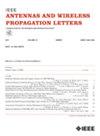物理信息复自然共振频率校正
IF 4.8
2区 计算机科学
Q2 ENGINEERING, ELECTRICAL & ELECTRONIC
引用次数: 0
摘要
复固有共振频率仅由目标的固有特性决定,与入射角和目标姿态无关,因此基于复固有共振频率的目标识别是一种很有前途的解决方案。然而,现有的提取方法不可避免地引入了计算误差,导致其提取不准确,限制了识别精度的提高。为了解决这些问题,提出了基于物理的复杂自然共振频率校正方法。首先,设计了基于目标共振散射机制的损失函数;利用物理驱动网络提取特征,加强对校正数据的物理约束。其次,通过引入复值神经网络的思想,设计了复杂域变分自编码器,该编码器考虑了复杂数据实部和虚部之间的相关性,从而挖掘了数据更多的内在特征;实验结果验证了该方法的有效性。与原始数据相比,实部和虚部的相对误差分别减小了18.02%和0.49%。提高了校正数据与目标共振散射机制的一致性。本文章由计算机程序翻译,如有差异,请以英文原文为准。
Physics-Informed Complex Natural Resonance Frequency Correction
Complex natural resonance frequency is only determined by target’s intrinsic properties, and independent of incident angle and target’s attitude, making target recognition based on complex natural resonance frequency a promising solution. However, the existing extraction methods inevitably introduce calculation errors, resulting in inaccurate extraction of it, which limits the improvement of recognition accuracy. To address these issues, physics-informed complex natural resonance frequency correction is proposed. First, a loss function based on target’s resonance scattering mechanism is designed. Physics is used to drive network to extract features, strengthening the physical constraints on the corrected data. Second, by introducing the idea of complex-valued neural network, a complex domain-variational autoencoder is designed, which considers the correlation between the real and imaginary parts of complex data, thereby excavating more internal features of data. Experimental results verify the effectiveness of the proposed method. Compared with the original data, the relative errors are reduced by 18.02% for the real part and 0.49% for the imaginary part. Improving the consistency between corrected data and target’s resonance scattering mechanism.
求助全文
通过发布文献求助,成功后即可免费获取论文全文。
去求助
来源期刊
CiteScore
8.00
自引率
9.50%
发文量
529
审稿时长
1.0 months
期刊介绍:
IEEE Antennas and Wireless Propagation Letters (AWP Letters) is devoted to the rapid electronic publication of short manuscripts in the technical areas of Antennas and Wireless Propagation. These are areas of competence for the IEEE Antennas and Propagation Society (AP-S). AWPL aims to be one of the "fastest" journals among IEEE publications. This means that for papers that are eventually accepted, it is intended that an author may expect his or her paper to appear in IEEE Xplore, on average, around two months after submission.

 求助内容:
求助内容: 应助结果提醒方式:
应助结果提醒方式:


